There’s something deeply satisfying about digging into rich soil and unearthing plump, golden potatoes grown by your own hands. One of the most versatile and beloved vegetables worldwide, potatoes are also surprisingly easy to grow — even for beginners. Whether you have a large garden, a raised bed, or a few containers on your patio, you can successfully plant and harvest your own crop of these hearty tubers.
In this comprehensive guide, we’ll walk you through everything you need to know about how to plant potatoes for a bountiful harvest — from selecting the right varieties and preparing the soil to planting, caring, and harvesting your homegrown spuds.
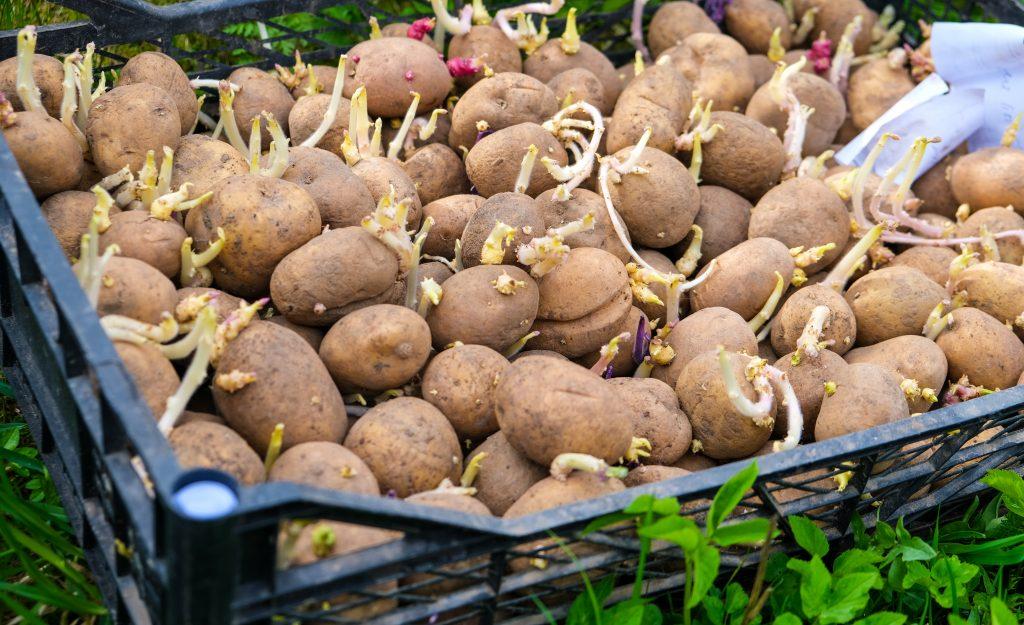
Why Grow Potatoes at Home?
Potatoes are one of the easiest root vegetables to grow and require relatively little space or special equipment. Plus, the reward of lifting a forkful of soil to find clusters of potatoes is hard to beat.
Benefits of homegrown potatoes:
- Fresh, chemical-free harvest
- Better flavor and texture than store-bought varieties
- Choice of unique and heirloom varieties not often found in markets
- Can be grown in gardens, containers, or grow bags
Choosing the Right Potato Varieties
Before you plant, it’s essential to select the type of potato that suits your growing conditions and culinary preferences. Potatoes come in three main categories based on their harvesting time:
1. Early Potatoes:
- Ready in 70–90 days
- Smaller yields but earlier harvest
- Examples: ‘Yukon Gold,’ ‘Red Norland,’ ‘Irish Cobbler’
2. Midseason Potatoes:
- Ready in 90–110 days
- Balanced yield and harvest time
- Examples: ‘Kennebec,’ ‘Red Pontiac,’ ‘Gold Rush’
3. Late Potatoes:
- Ready in 110–135 days
- Large yields, good for long-term storage
- Examples: ‘Russet Burbank,’ ‘German Butterball,’ ‘Elba’
Pro tip: If you want a continuous harvest, plant a mix of early, midseason, and late varieties.
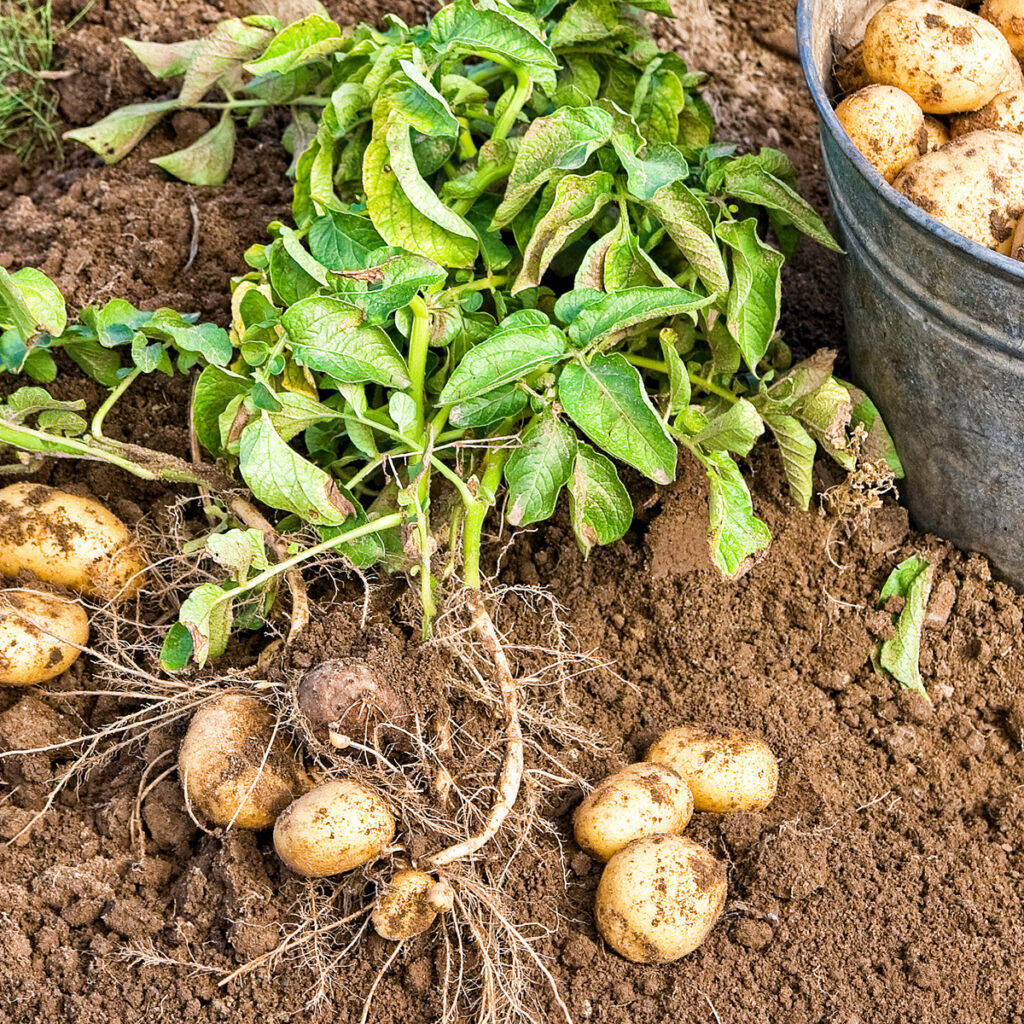
When and Where to Plant Potatoes
Potatoes are cool-weather crops that grow best in spring and early summer.
Ideal planting time:
- 2–4 weeks before your region’s last expected frost date
- Soil temperature should be at least 45°F (7°C)
Sunlight requirements:
- Full sun (6–8 hours daily)
Soil needs:
- Well-drained, loose, sandy loam soil
- pH between 5.5 and 6.5
- Enriched with compost or aged manure
Preparing Seed Potatoes
Unlike other vegetables grown from seeds, potatoes are planted using seed potatoes — small potato tubers specifically grown for planting.
How to prepare seed potatoes:
- Purchase certified disease-free seed potatoes from a reputable supplier.
- A week before planting, cut larger potatoes into pieces, each with at least one or two “eyes” (sprouting buds).
- Let the cut pieces dry for 1–2 days to form a callous over the cut surfaces, reducing the risk of rot.
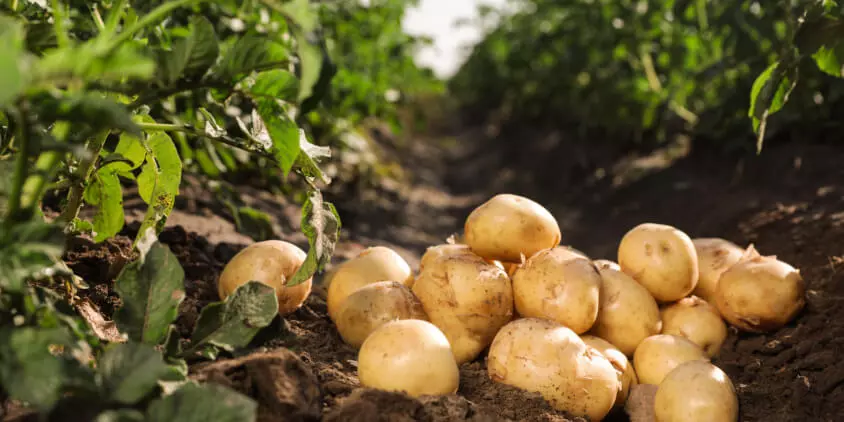
How to Plant Potatoes
There are a few popular methods for planting potatoes, but all follow similar basic principles: providing loose soil for tuber development and hilling soil over the plants as they grow.
Traditional In-Ground Planting:
- Dig trenches about 6–8 inches deep and 2–3 feet apart.
- Place seed potatoes cut-side down (eyes facing up) 12 inches apart.
- Cover with 3–4 inches of soil.
- As plants grow, hill soil up around stems every few weeks until mounds are about 8 inches high.
Raised Bed Planting:
- Follow the same spacing and trench guidelines, but plant in loose, compost-rich soil within raised beds for easier management and harvesting.
Container or Grow Bag Planting:
- Use large containers or potato grow bags with good drainage.
- Add 4 inches of soil to the bottom.
- Place seed potatoes evenly, cover with 4 inches of soil.
- As plants grow, add more soil to cover stems, leaving a few inches of leaves exposed.
Caring for Potato Plants
Watering:
- Consistent moisture is essential, especially when tubers are forming.
- Water deeply 1–2 inches per week.
- Avoid waterlogging, which can cause rot.
Fertilizing:
- Potatoes are heavy feeders.
- At planting: Mix a balanced fertilizer (10-10-10) or compost into soil.
- Side-dress with fertilizer when plants are 6–8 inches tall, then again when they start flowering.
Hilling:
- Crucial to protect developing tubers from sunlight (which turns them green and toxic).
- When plants are 6–8 inches tall, mound soil around the base, covering stems halfway.
- Repeat every 2–3 weeks.
Weeding:
- Keep the area around your potatoes free of weeds to reduce competition for nutrients and water.
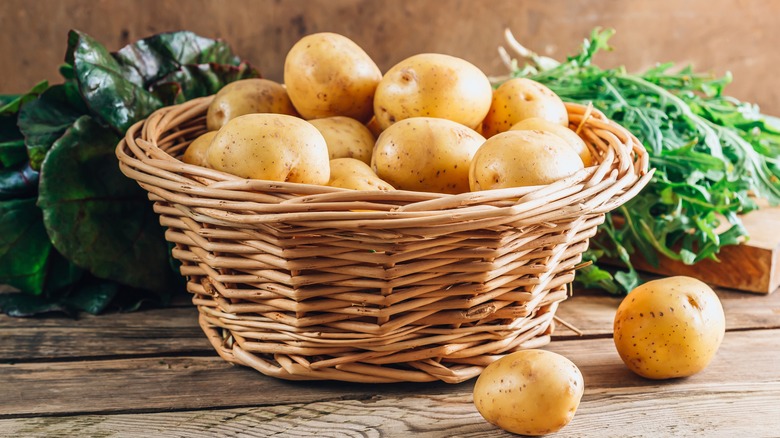
Common Pests and Diseases
Potatoes are susceptible to several pests and diseases.
Common pests:
- Colorado potato beetles: Yellow-striped beetles and their larvae feed on leaves.
- Aphids: Small, sap-sucking insects that weaken plants.
- Wireworms: Larvae of click beetles that bore into tubers.
Control measures:
- Handpick beetles and larvae.
- Use insecticidal soap or neem oil for aphids.
- Rotate crops yearly to prevent soil-borne pests.
Common diseases:
- Late blight: Causes brown spots and plant collapse.
- Early blight: Dark spots with concentric rings on leaves.
- Scab: Corky lesions on tuber surfaces.
Preventative tips:
- Plant certified seed potatoes.
- Avoid planting in the same spot more than once every three years.
- Provide good air circulation and avoid overhead watering.
Harvesting Potatoes
Potatoes can be harvested at different stages depending on your needs.
1. New Potatoes:
- Harvest when plants flower.
- Carefully dig around plants and lift small, tender potatoes.
- Leave remaining tubers to mature.
2. Mature Potatoes:
- Wait until the foliage turns yellow and dies back (about 2–3 weeks after flowering ends).
- Use a garden fork to gently lift tubers from soil.
- Avoid puncturing or bruising tubers.
Harvest tips:
- Harvest on a dry day.
- Allow potatoes to air-dry for a few hours before storing.
Storing Potatoes
Proper storage keeps potatoes fresh and edible for months.
Storage guidelines:
- Cure potatoes in a dark, well-ventilated place at 50–60°F (10–15°C) for 1–2 weeks.
- Store in a cool, dark place at 35–40°F (2–4°C).
- Keep them in burlap sacks, paper bags, or wooden crates.
- Avoid plastic bags, which trap moisture.
- Check regularly for soft or sprouting potatoes and remove them.
Final Thoughts
Growing your own potatoes is one of the most rewarding gardening experiences — not only for the abundance of harvest but also for the joy of unearthing hidden treasures from beneath the soil. Whether you plant them in a backyard garden, a raised bed, or a container, the steps are simple and the results are deeply satisfying.
Choose your favorite varieties, prepare fertile soil, water consistently, and protect your crop from pests and diseases. With a little care and attention, you’ll enjoy a hearty harvest of homegrown potatoes that are fresher and tastier than anything you can buy.

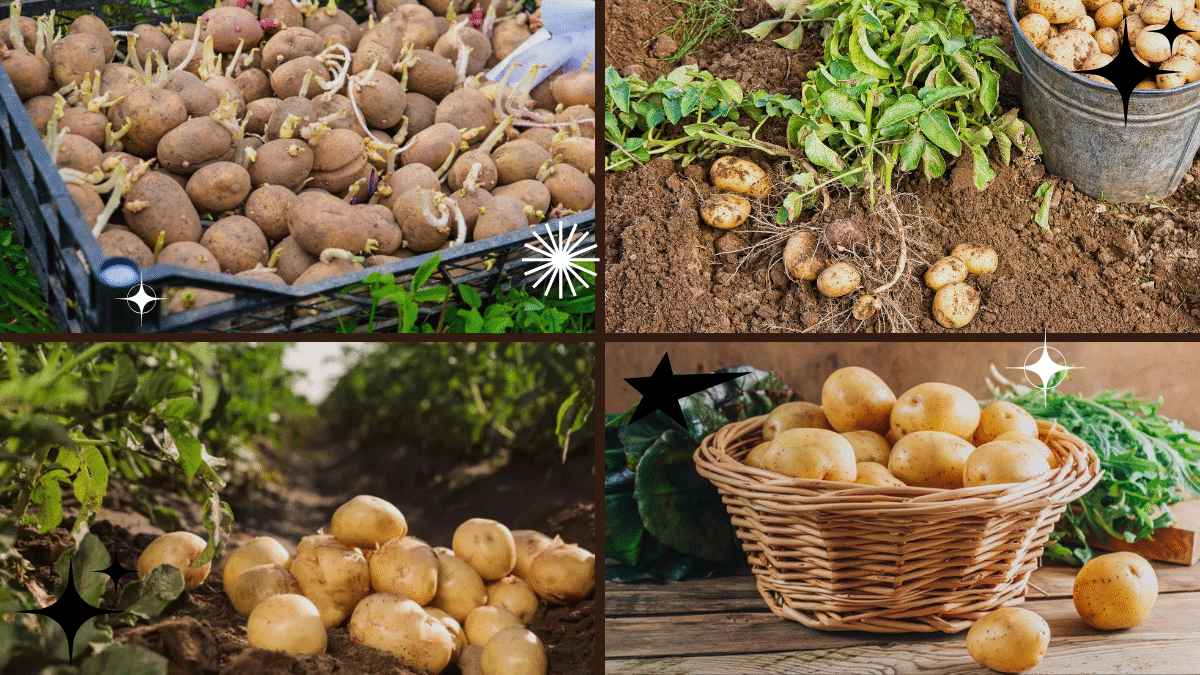



Leave A Comment